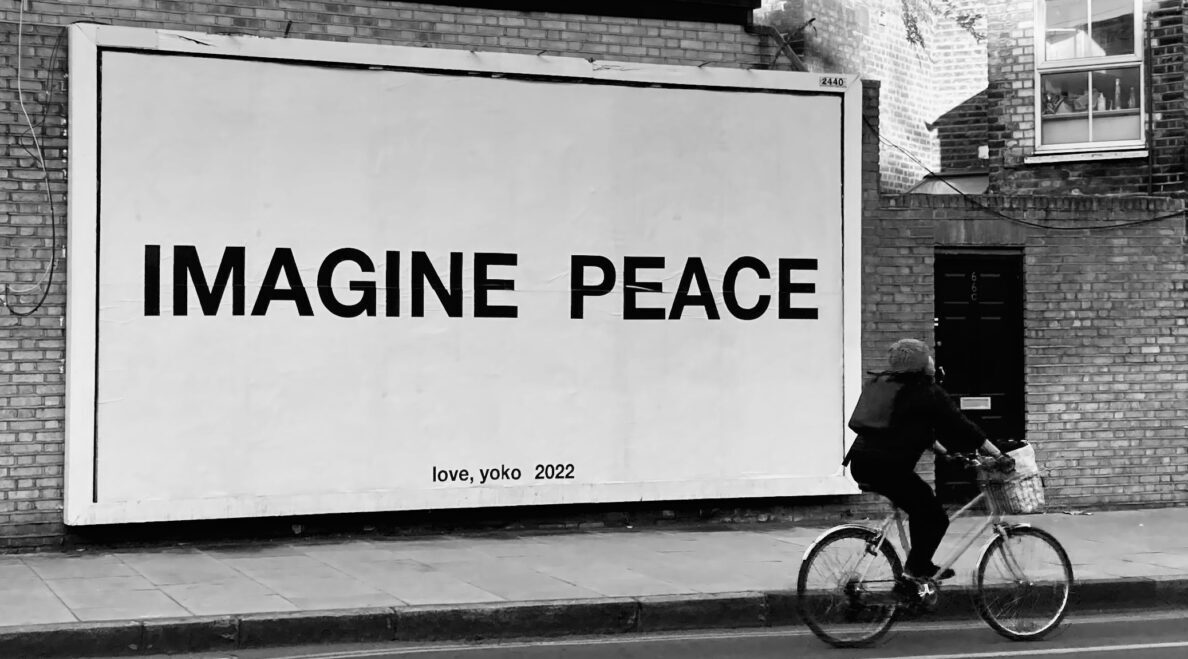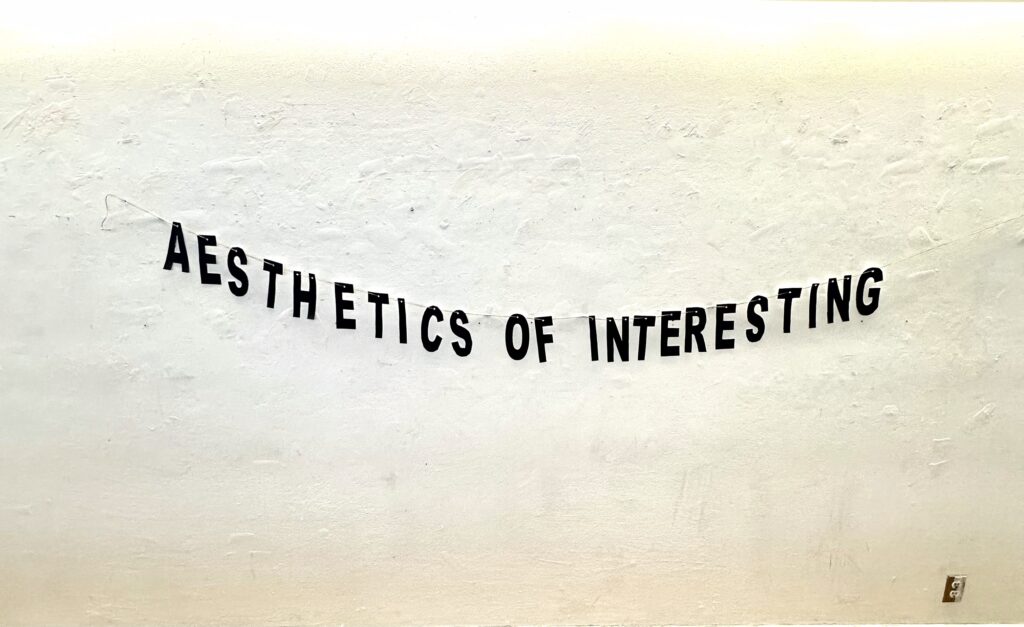
“Aesthetics of Interesting” refers to what makes something interesting or thought-provoking. Instead of sticking to usual ideas of what beauty is, it focuses on grabbing and keeping people’s attention. I think this often happens when we spark each other’s curiosity, surprising us, or getting us to think deeply about something. It’s not fair to say that the background, font, and overall layout of this phrase is uninteresting because what actually is interesting is not for me to decide. This phrase invites viewers to question what exactly qualifies as “interesting” and how aesthetics can form this multidimensional concept. The simplicity of the background, and the awkward arrangement of the letters creates a raw feeling that is spontaneously put together as opposed to a curated, perfectionistic look.
Video Project – Power Tripping & Protests
By Manny & Matei
EXPERIMENTAL FIELD TRIP 2025
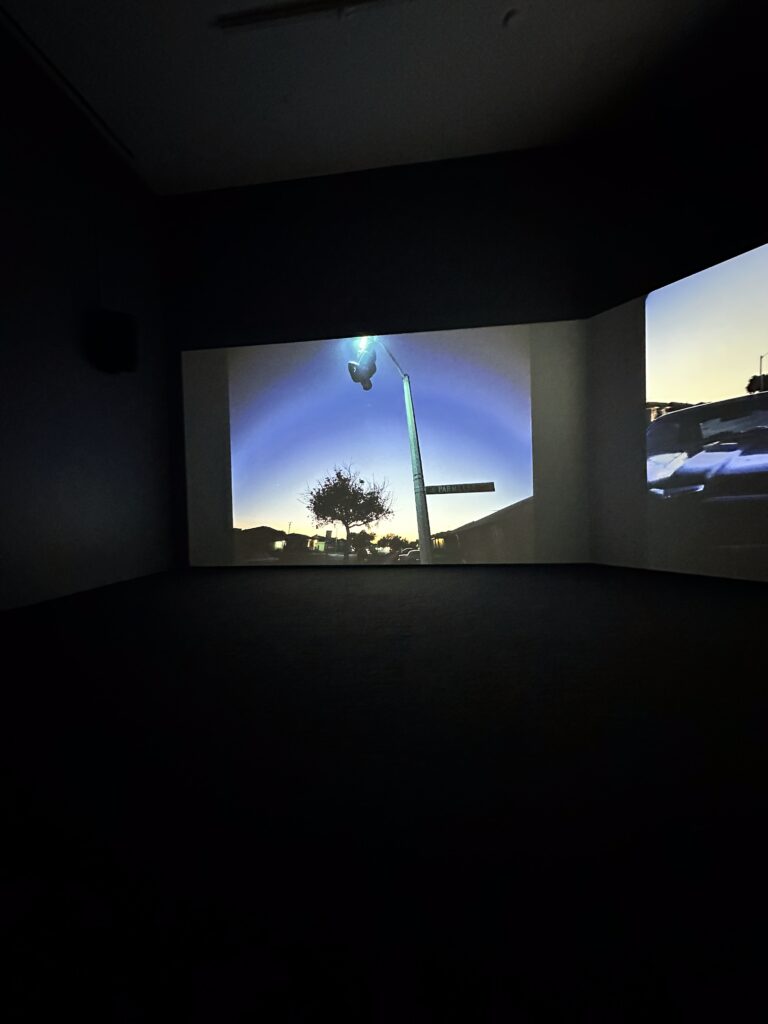
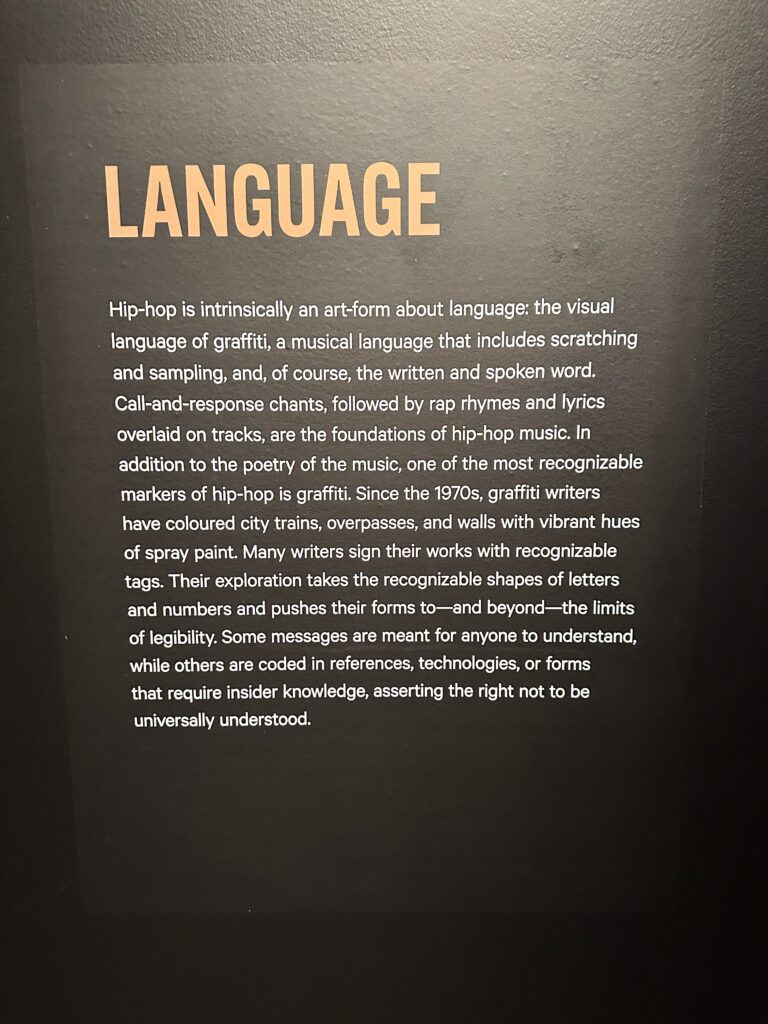
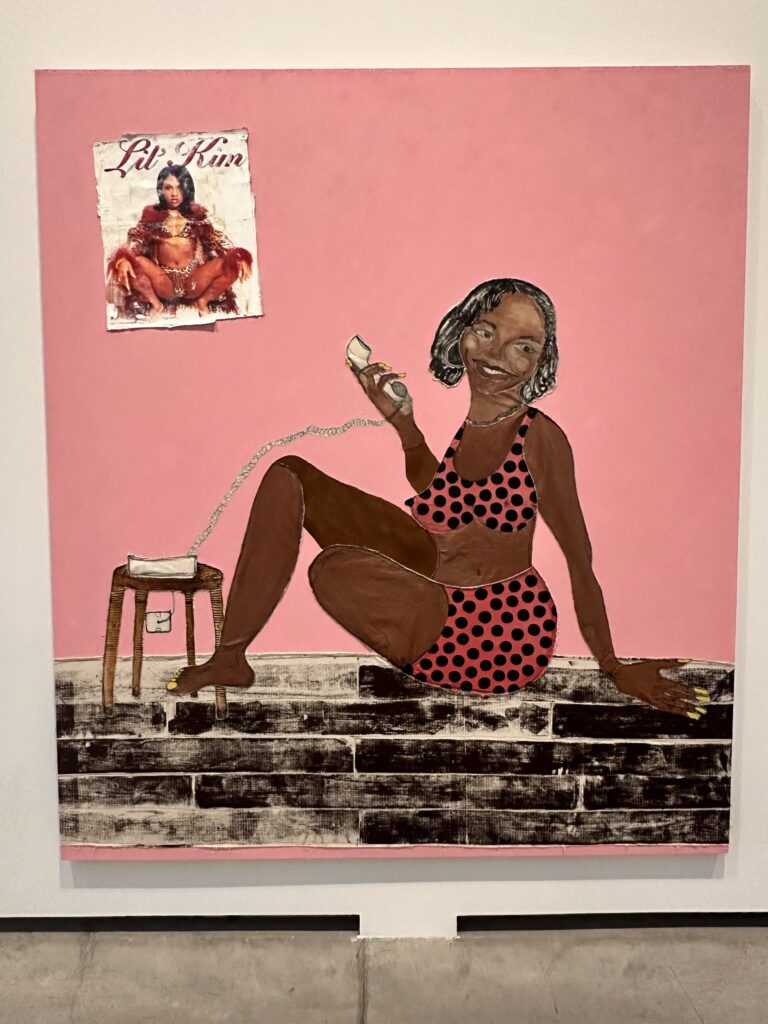
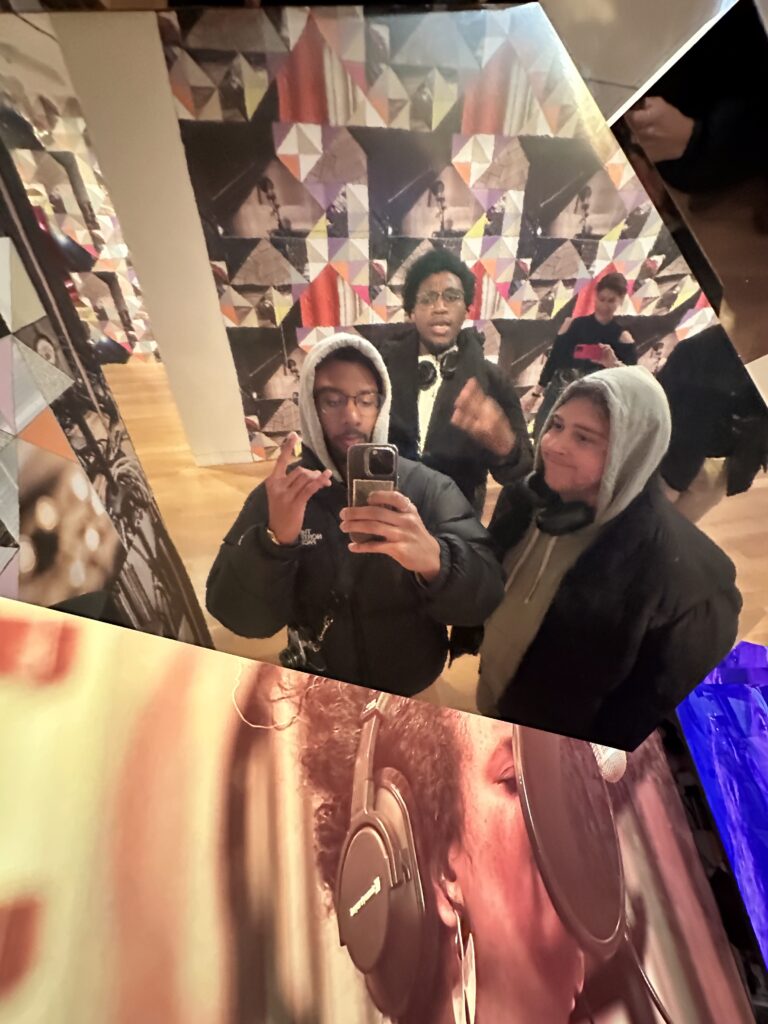
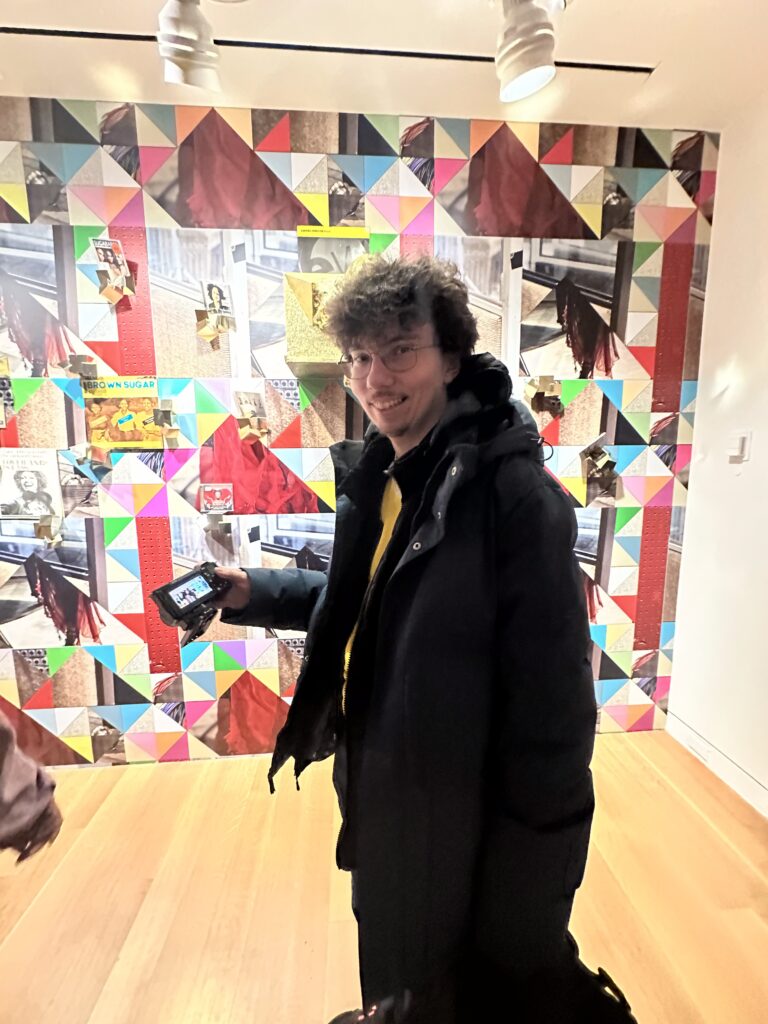
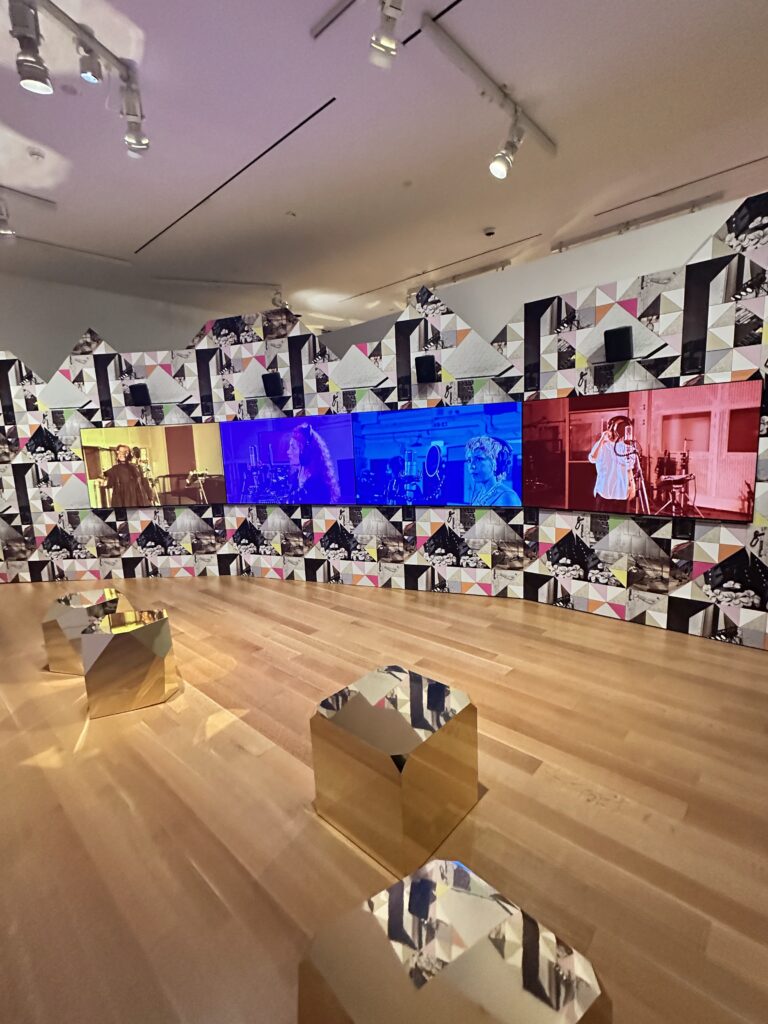
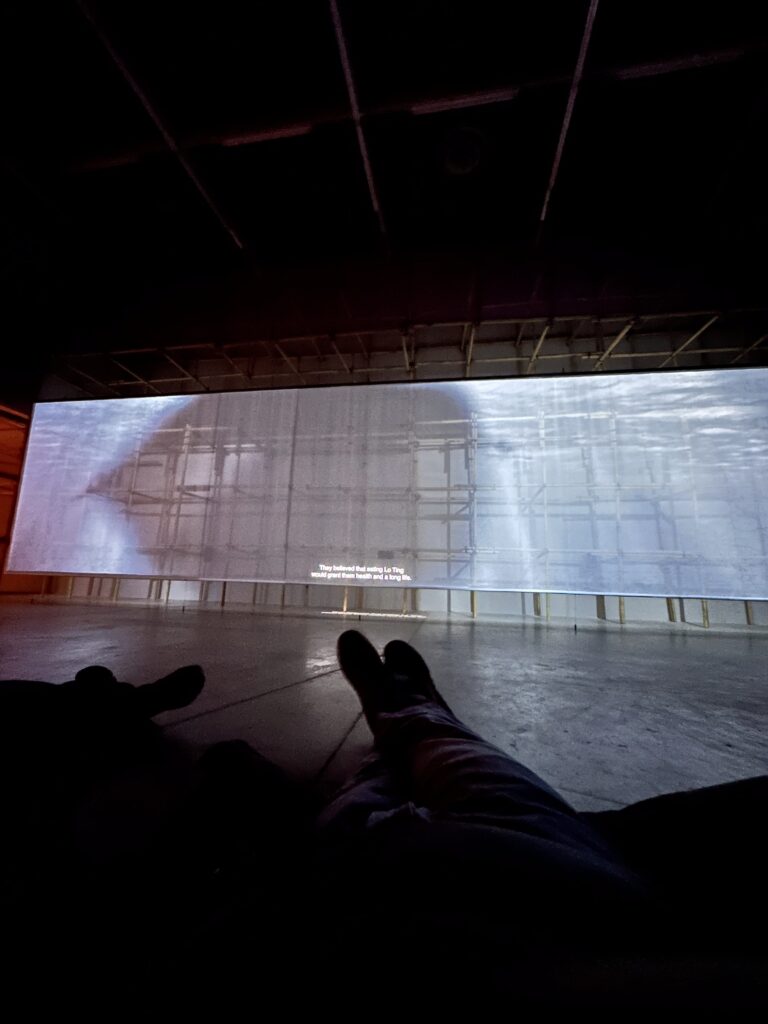
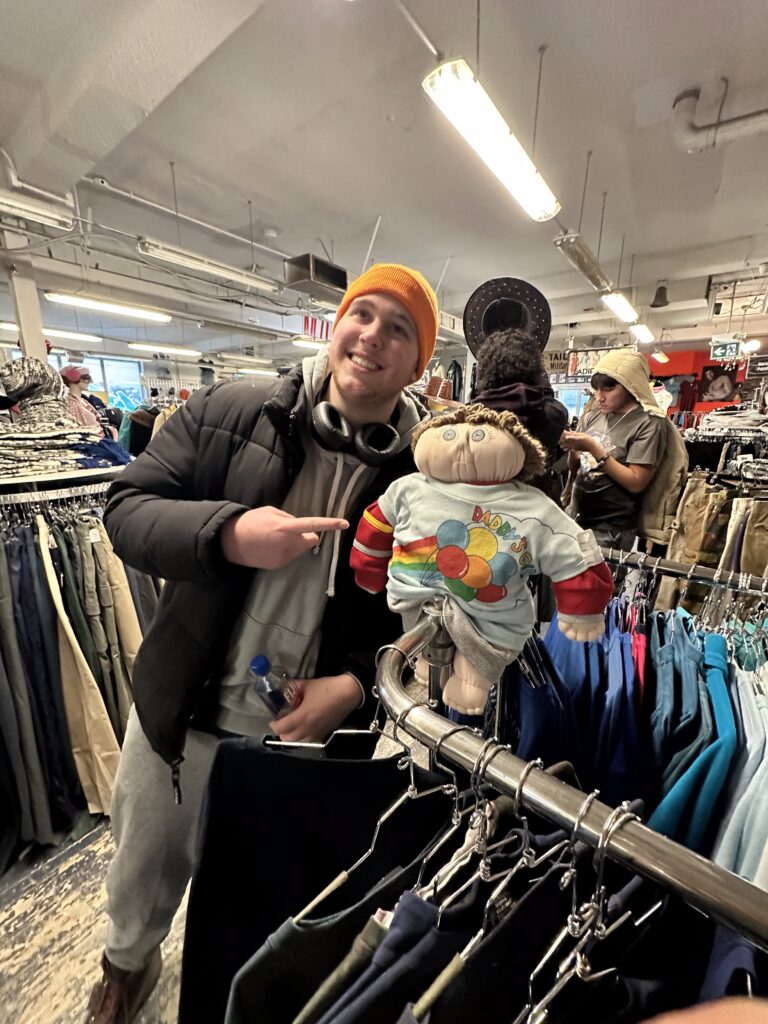
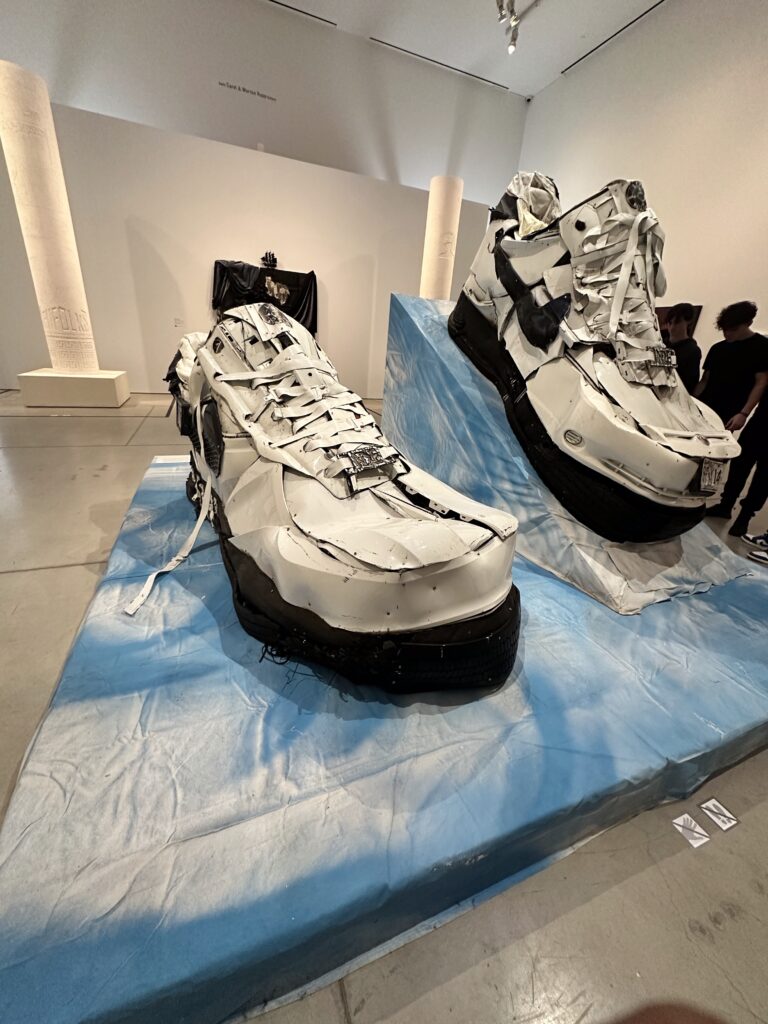
Visiting the AGO and The Power Plant was a fantastic experience, and both spaces had immersive exhibits of art that blew me away. M.A.A.D City was a highlight for me at the AGO. The title is inspired by Kendrick Lamar’s album Good Kid, M.A.A.D City. You walk into a dark room, and projected on the walls is a series of footage both found and created of the life and culture of Compton, California, where Kendrick is from. While I was sitting down and taking in the visuals, I thought about how drastically dissimilar my life is compared to the people who live there. Gang violence, drugs, and poverty are all the everyday norms in some of the neighbourhoods in Compton, and that is reflected in the subject matter that was shown and also in the lyrics that Kendrick raps.
Midway through the montage of clips, EJ made a remarkable point that profoundly struck me. He said even though our experience in Canada is different in many ways, I still resonate with a lot of the content because of our shared experience of being a person of colour. What EJ said is accurate, and what’s fascinating and terrifying is that if we were to swap our shoes for their shoes, we would most likely be going through a similar experience. This idea prompted me to reflect on the phrase, “we are a product of our environment.” Unfortunately, people of colour are often misunderstood and discriminated against based on where they come from, the company they keep, and how they talk, dress, and behave. If individuals could be more considerate and understanding of the circumstances we face, there would be fewer difficulties in getting along and being kind to one another.
Neil Postman, Amusing Ourselves to Death
Foreword
“What Orwell feared were those who would ban books. What Huxley feared was that there would be no reason to ban a book, for there would be no one who wanted to read one” (Postman XIX).
- Contrasts Orwell’s 1984 (oppression through force) with Huxley’s Brave New World (oppression through pleasure).
- Argues that Huxley’s vision is more relevant: people are controlled by entertainment and distraction rather than censorship.
- The danger is not a lack of information but the trivialization of discourse due to media saturation.
Introduction
“We do not see or hear or touch reality directly. We are always the products of the media we consume” (Postman 25).
- Postman introduces his main argument: Television has transformed public discourse into entertainment, affecting politics, religion, education, and journalism.
- Claims that every medium carries a “hidden bias” in how it communicates ideas.
- Uses the phrase “the medium is the metaphor,” meaning that how information is delivered shapes its meaning and importance.
- Suggests that modern society is no longer driven by rational, print-based culture but by entertainment-focused television culture.
Chapter 1: The Medium is the Metaphor
“Our conversations about nature and about ourselves are conducted in whatever languages we are capable of speaking” (Postman 16).
- Argues that different communication media shape how societies think and what they value.
- Gives historical examples, such as oral cultures valuing memory and print cultures valuing rational argument.
- Suggests that television has shifted society away from logical discourse toward visual entertainment.
- Warns that when entertainment dominates a medium, it influences even serious topics like politics and education.
1. Are some of these ideas from more than 40 years ago applicable to our own historical moment?
Absolutely. Postman’s argument about media shaping public discourse is even more relevant today. He warned that entertainment-driven media would diminish serious, rational debate, which we now see in the dominance of social media, clickbait news, and short-form content (e.g., TikTok, YouTube Shorts). His concerns about a culture obsessed with amusement over substance apply to the digital age, where people often engage with politics and complex issues through memes, soundbites, and viral trends rather than deep analysis.
2. Did Neil Postman predict the age of television/video media personalities in positions of great power?
Yes, in many ways. Postman warned that television favours charisma, image, and entertainment over depth and substance, which is precisely how many media-driven figures have risen to power. He argued that in an image-based culture, leaders are chosen not for their policies but for their ability to perform well on screen. This prediction aligns with modern politics, where figures like Donald Trump, who was a reality TV star before becoming president, leveraged media spectacle to gain influence.
3. How does he argue that the overflow of accessible, 24/7 information and entertainment might make us less wise, healthy, and safe?
Postman argued that when information is constant and endless, people become desensitized and unable to distinguish what truly matters. He believed that entertainment-driven media conditions people to prioritize amusement over critical thinking, making them passive consumers rather than engaged citizens. Instead of being empowered by information, society becomes overwhelmed, distracted, and detached from meaningful action.
4. How might these ideas influence how you think about the effects of video culture in our own time?
Postman’s insights encourage a more critical view of modern media consumption. It’s easy to assume that more access to information leads to a more informed public, but Postman warns that how information is presented matters just as much as what is presented.
The Culture
The initial idea behind this assignment was to explore the juxtaposition between police brutality and protests, both in past history and in recent times. However, as Matei and I gathered clips and edited the selected videos, our concept evolved into something more open-ended and ambiguous. We drew inspiration from artist Arthur Jafa’s video titled LOVE IS THE MESSAGE, THE MESSAGE IS DEATH. We aimed to develop a similar raw and graphic approach using our own judgment and creativity. Kendrick Lamar’s song Reincarnated plays in the background throughout our video, chosen intentionally to enhance our vision of Black culture in Western society. Lamar raps from the perspective of musicians who have passed away, then shifts back to his own perspective, reflecting on his career as an artist. In the final verse, he has a one-on-one conversation with God, sharing the wonderful things he has done to help others while also expressing his feelings of conflict when God reveals to him where he has fallen short.This idea of reincarnation resonates in our video, as the monumental moments from history will continue to live on beyond our generation and into future ones. These moments will be reincarnated for the next person, who will bring forth their own interpretation and meaning, perpetuating an endless cycle of layered depth in the Black experience.
My Crops Are Dying But My Body Persists – Bridget Moser
There’s something oddly poetic about the title My Crops Are Dying But My Body Persists. It creates an immediate feeling that even though life is moving forward in time the world around us continues to deteriorate as do our bodies. Watching this video I felt a deep connection to the theme of impermanence and inevitability. The visuals carry a weight of solitude and it shows a world that is drying out yet the person still remains. There is a quiet defiance in persistence, even when everything shows that it’s time to give up. I’d argue that the struggle between the self isn’t just external it’s mostly an eternal fight that raises the question of what exactly does it mean to keep going when everything else is fading? or
Parent Assignment
A few years ago, my grandfather passed away. He and I were very close, and he was somebody I looked up to and admired deeply. Since his passing, I have had to navigate and process the emotions that I am feeling due to this loss. My grandmother and I openly talk pretty frequently about grief and how it has affected our lives. Some days, I am perfectly fine; the next, a wave of sadness hits me, and I cry. Although it is difficult for my grandfather not to be here with our family anymore, it has given me purpose and a reason to live for something greater than myself. I’ve always tried to make him proud, and in the back of my mind, I think about doing things that would make him proud. Over the past year, I have examined the topic of grief in other courses and in my work outside of school. My grandmother and I have often discussed the idea that loss is something we can never truly overcome. Instead of trying to fully get over it, we believe that the goal should be to learn how to live with it and move forward in life. This perspective is much more important. In this video, my grandmother and I have a raw, authentic, and deeply personal conversation surrounding these three questions 1. Do you ever feel grandpa’s presence?, 2. How has your understanding of death changed over the years? 3. Do you think people should talk about death more openly?
MFA Open Studio
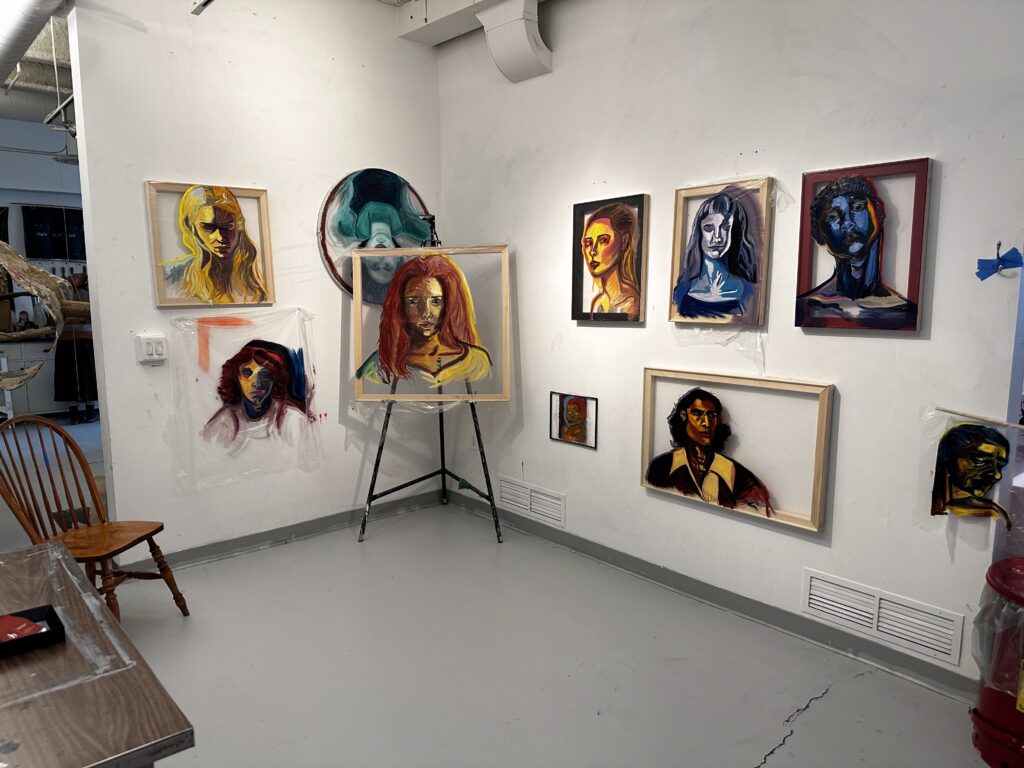
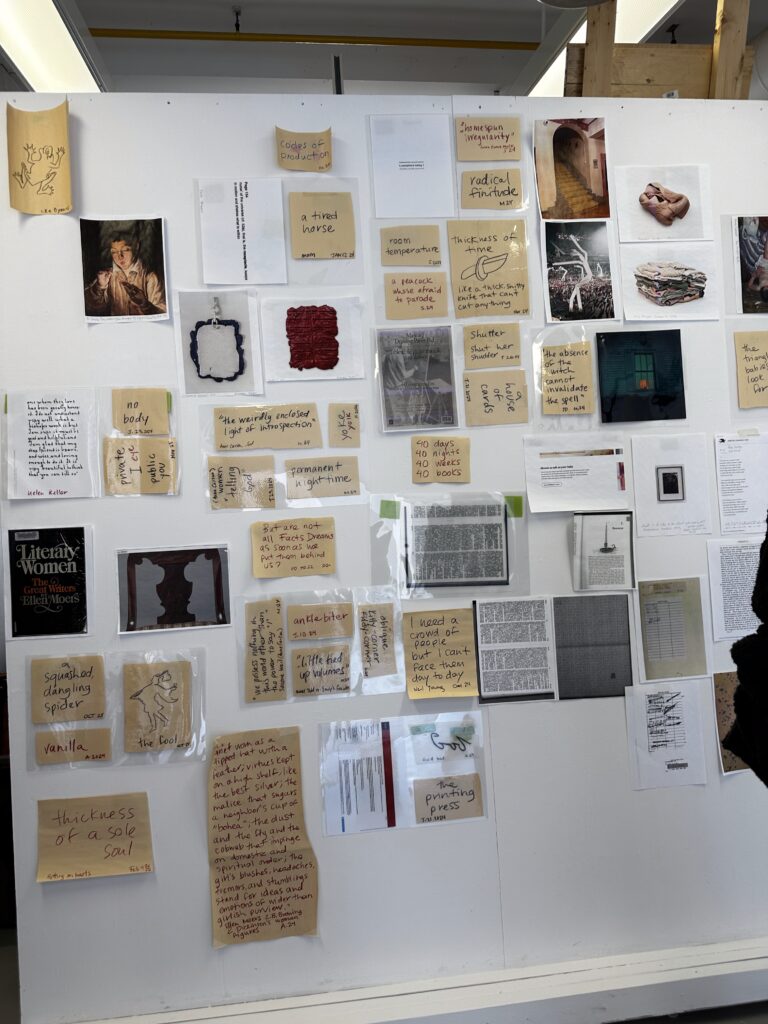
I had a great experience visiting the independent studios in Alex on Wednesday, March 19th. As a lead volunteer for the event, I enjoyed getting to know the other volunteers and speaking with upper-year Studio Art students and MFA students. I was particularly impressed by the studios in Fire Hall. The wide space in that building is a great space to thrive and create, and the intimate setting enriches one’s artistic practice. The spaces we occupy are integral to our identity as artists. Finding a space to create can be hard, but once you find a place that feels like home, it becomes more natural to immerse yourself in your work and forget about external distractions. I hope to have my own independent studio next year and create my work in a private setting.
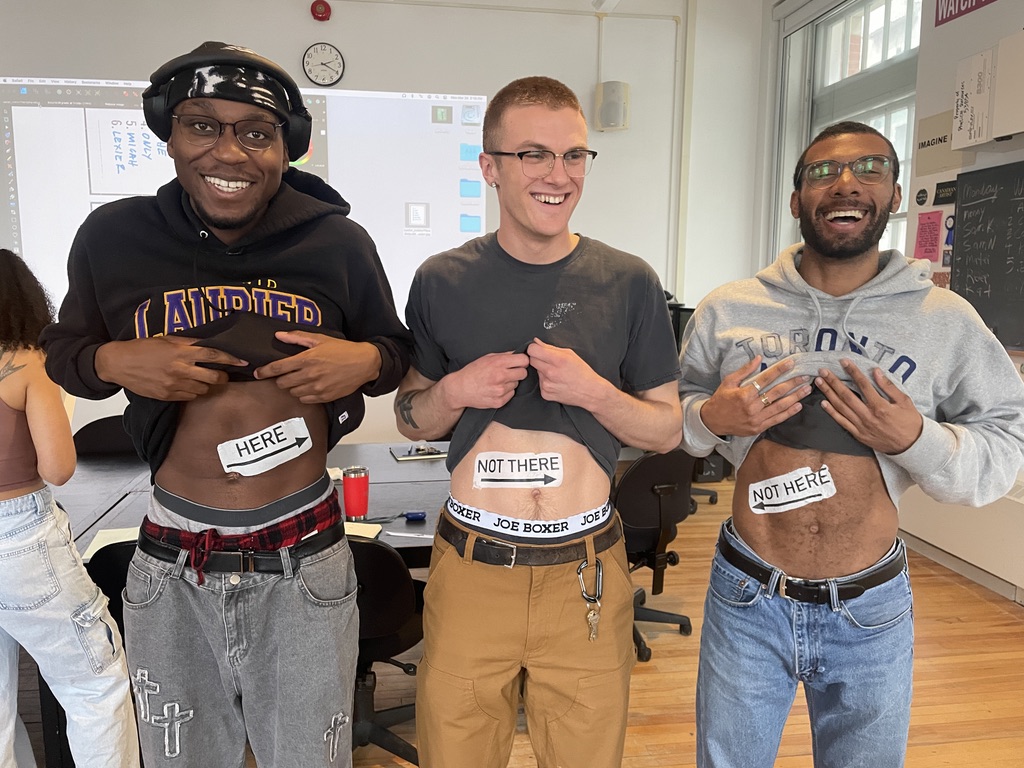
Artist Multiples-Tattoos
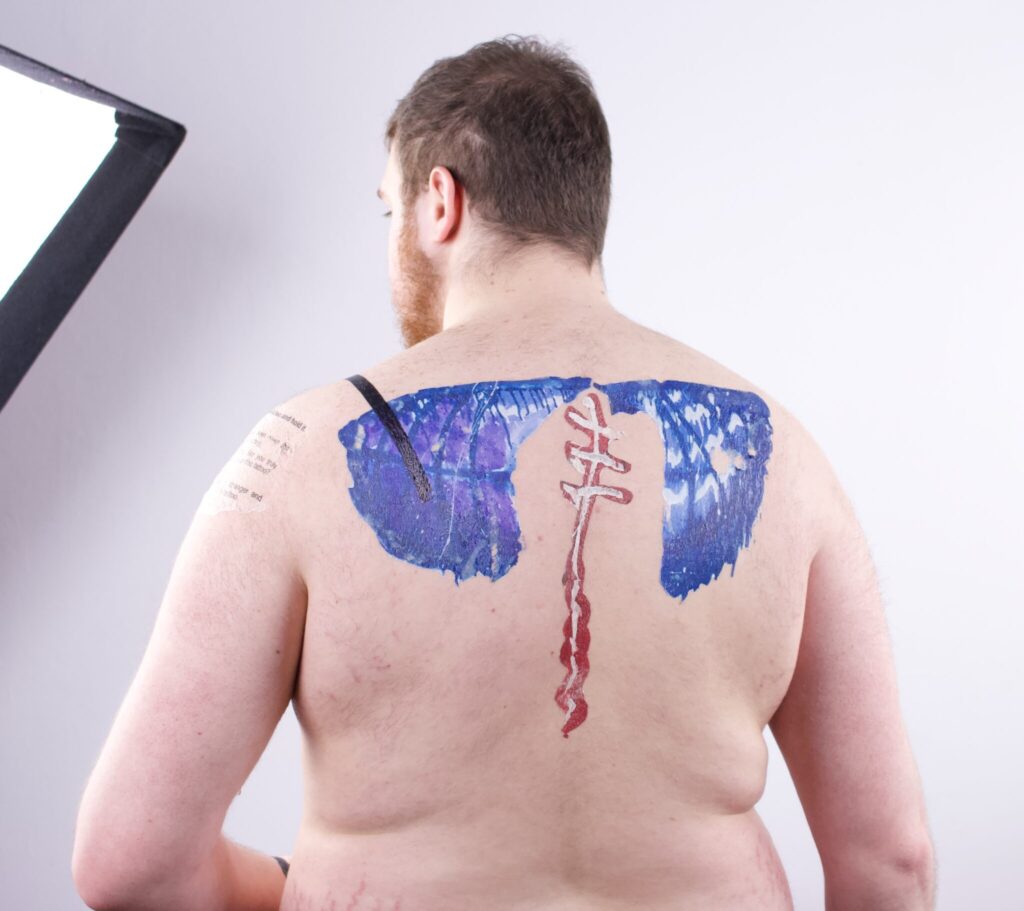
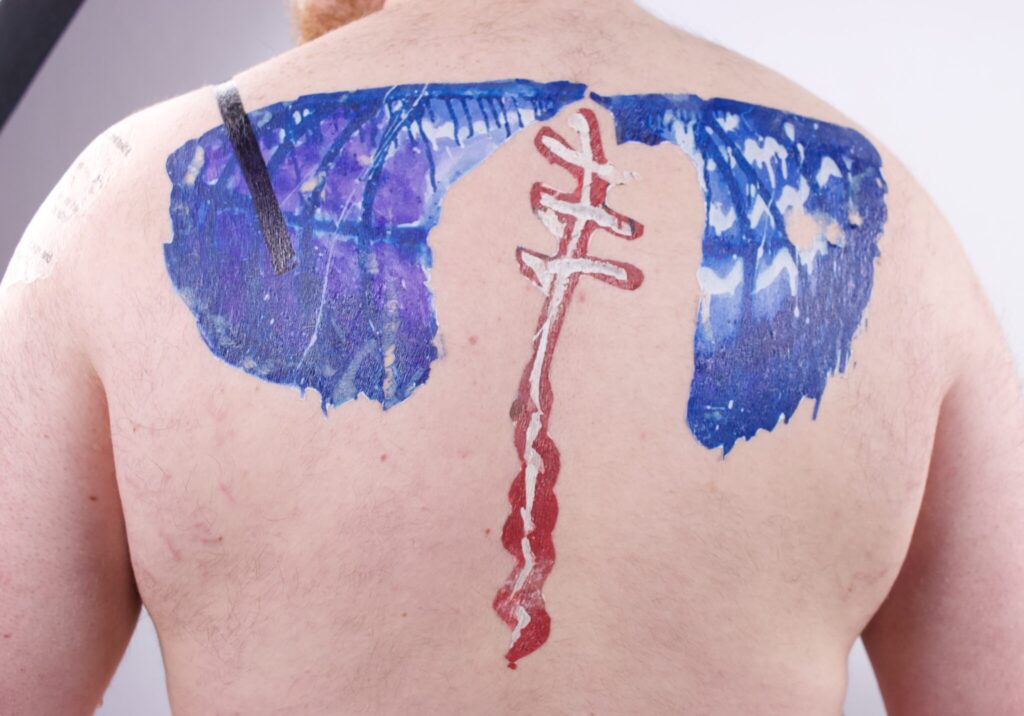
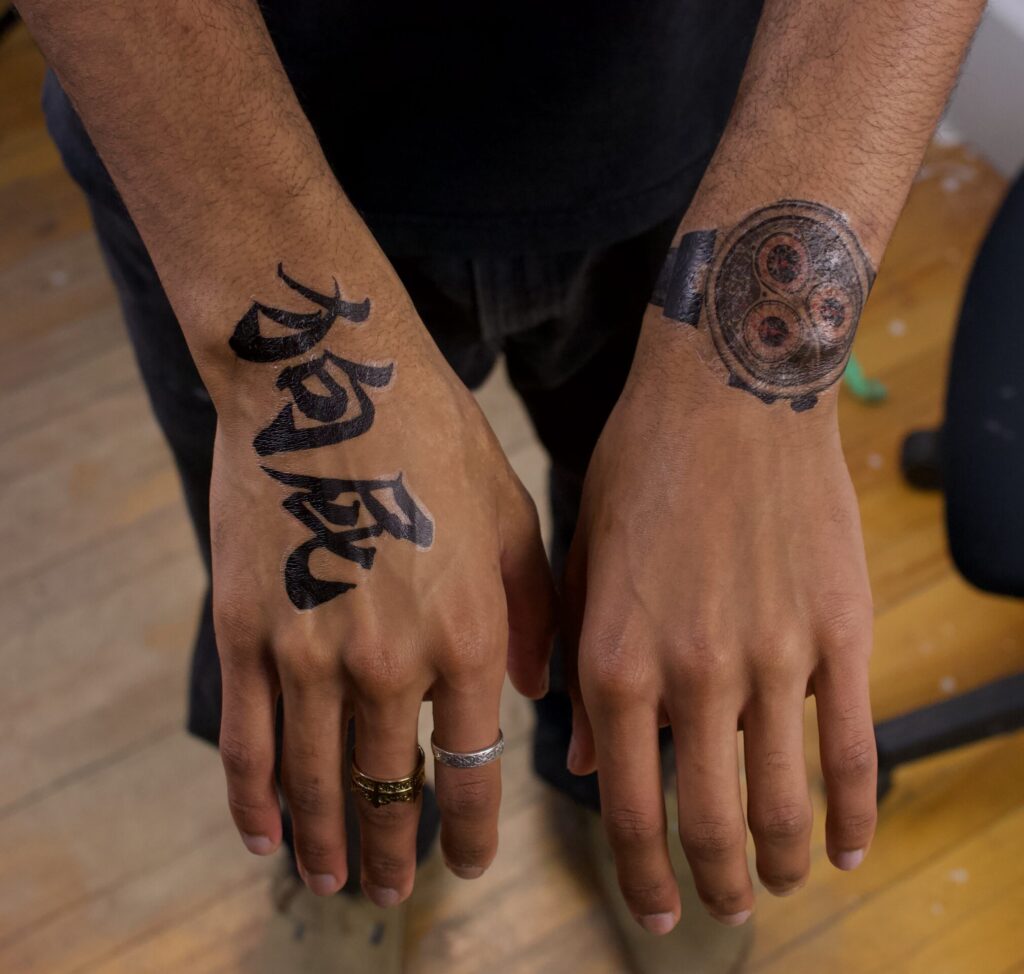
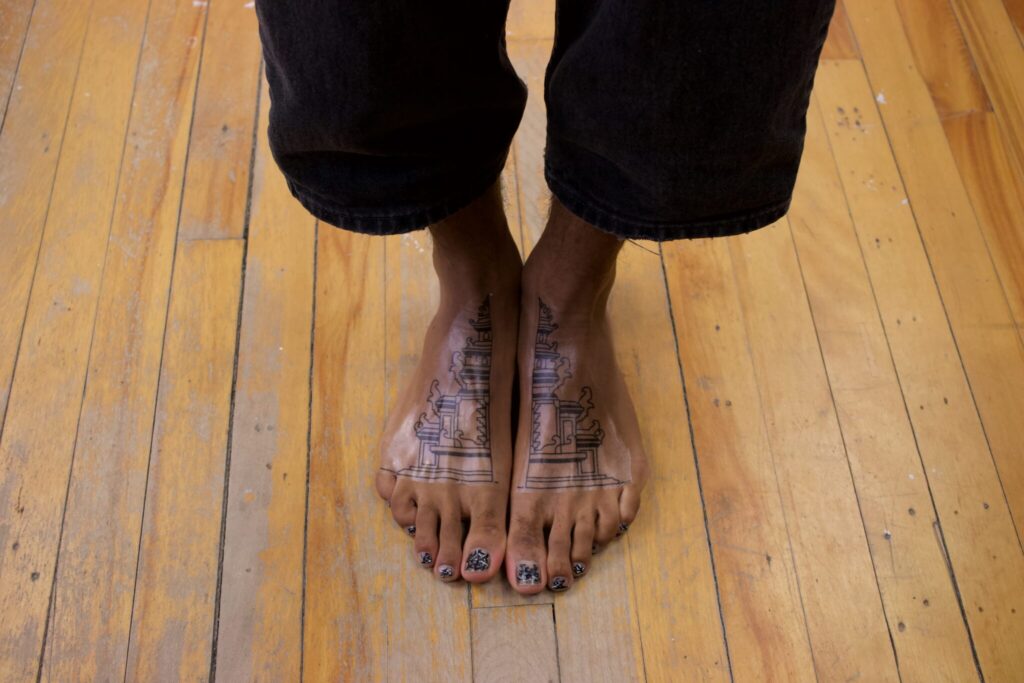
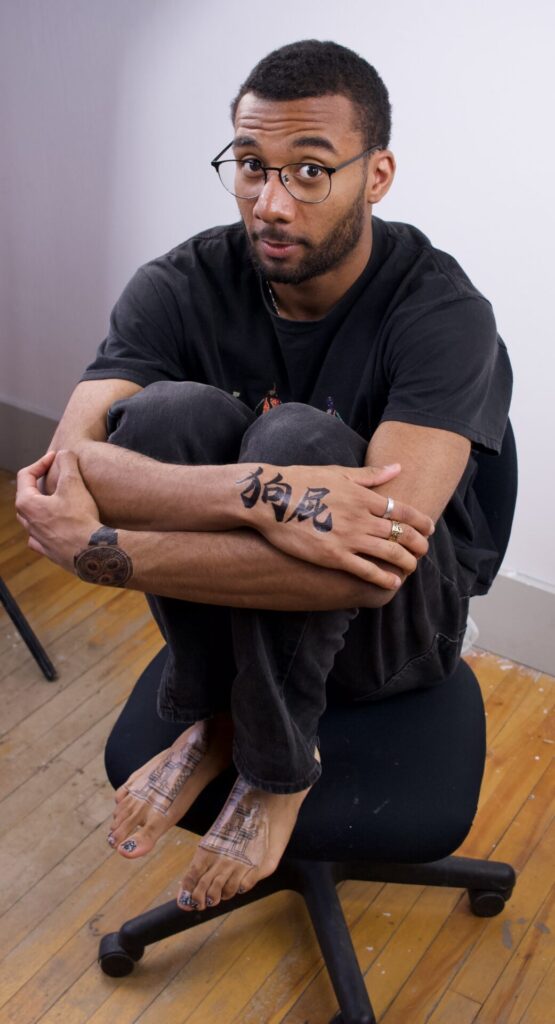
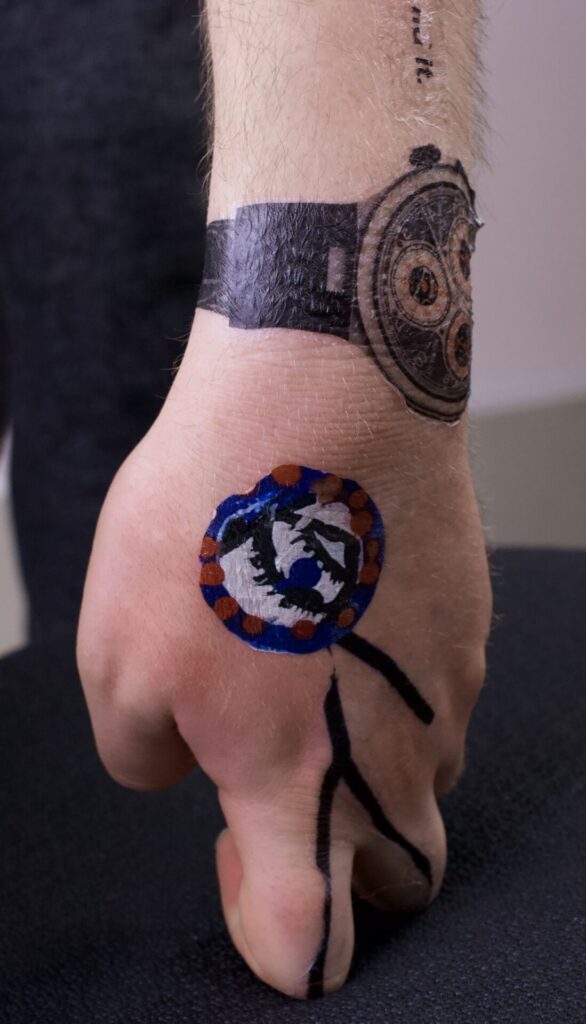
The initial plan for this assignment was to tattoo my paintings onto the backs of my classmates. The idea was to have people become a walking gallery. I thought it could be an interesting way to repurpose my artwork that moves away from the traditional gallery curation with work displayed on a wall. After consulting with Diane, she agreed that the idea was definitely worth pursuing, but the dimensions of my paintings are all square, and just having the paintings tattooed would be too safe, so to speak. Diane suggested that I deconstruct the elements in my paintings and organize them in a way that they communicate with one another. Creating another layer of abstraction in the figures I have constructed in my paintings. The final result was tattoos of angel wings, a spinal cord, and eyes, each stemming from different paintings I have made in the past. I’m really satisfied with how the wings turned out. I think they are just the right size, and they fit on Roee’s back almost perfectly. If I were to do this project again, I would deconstruct more elements from my paintings and turn them into tattoos. I wanted to use my own artwork as inspiration for this project because I feel that my style is different from the tattoo art I have seen from people online or in public. I was curious to see if my style infused with the tattoos would turn out the way I envisioned, and I would say they did for the most part.
